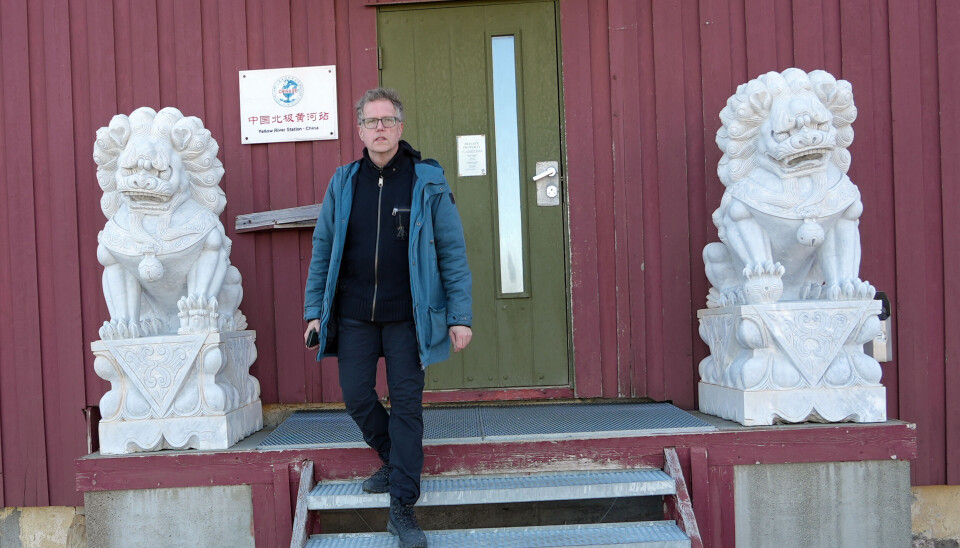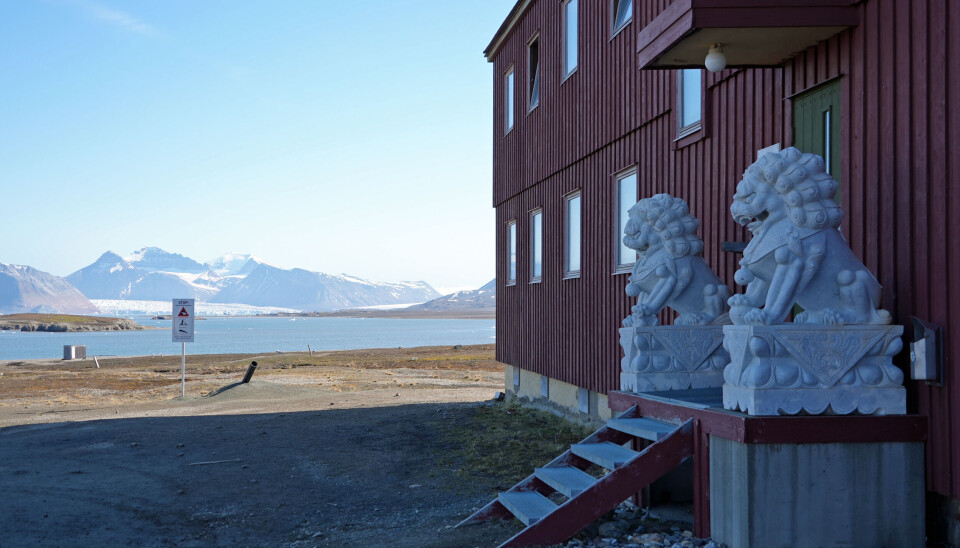
"This decision is not likely to be appreciated by Beijing"
Two stone lions outside the door to the Yellow River station in Ny-Ålesund at Svalbard could cause turmoil for Norway-China science cooperation on Arctic. Professor Marc Lanteigne believes the request to remove the statues may blunt protests.
Established in July 2004, the Yellow River Station in Ny-Ålesund became China’s first Arctic research presence.
Located north on Svalbard, the Yellow River Station is formally hiring the building from Kings Bay, the Norwegian state-owned company in charge of running the international science community.
Over the years, the two stone lions outside the entrance door has triggered questions about China’s use of symbolic signalling on its Arctic presence.
Norwegian authorities, though, have to find a practical balance between politicised foreign research at the Norwegian-owned science station simultaneously as keeping tensions low.
The request to remove the symbolic stone lions at the Yellow River Station building is therefore not coming from the Government in Oslo, but is part of a new overall plan by Kings Bay on how to mark the different buildings in Ny-Ålesund with new signs, local newspaper Svalbardposten reports.
Kings Bay is responsible for Svalbard’s largest collection of automatically listed buildings. One consequence of the new sign plan will be that the Chinese symbols will have to be removed or moved indoors.
“The Chinese are our tenants. We trust them to follow our instructions,” says Director of Kings Bay, Lars ole Saugnes to Svalbardposten.
Professor Marc Lanteigne with UiT - Arctic University of Norway in Tromsø is expert on China’s Arctic interests. He says to the Barents Observer that the presence of the lions in Ny-Ålesund has long been a concern for Norwegian authorities.

"There had been an unwritten understanding that all of the facilities there needed to focus on scientific endeavours and so there should not be any overt political symbols present on the ground."
Professor Lanteigne believes the decision to remove the statues will not likely to be appreciated by Beijing
"Chinese scholars have been critical in recent years of what they see as intensified steps by Norway to more centrally regulate scientific activities there, including the rule that research should be restricted to the physical sciences. This has been viewed in some Chinese research circles as misinterpreting the Svalbard Treaty," Marc Lanteigne says.
He adds: "The fact that these rules are to applied throughout Ny-Ålesund may blunt some protests, but there will likely be the impression in China that this is another example of Norway overstepping, and seeking to roll back the activities of the other Treaty signatories."

In Ny-Ålesund, which is the world’s northernmost year-round research community, more than 20 research institutions from several countries are present. Climate change, glaciology, marine life are important topics studied.
Russia is not present in Ny-Ålesund but runs its own research from Barentsburg. Here, the Kola Science Centre, a branch of the Academy of Science, has a laboratory and offices.
As previously reported by the Barents Observer, Moscow has pushed for creating a brand new Arctic science centre in Pyramiden, a Soviet ghost-town at Svalbard. Russia has invited partners from what it defines as ‘friendly countries’ to team up, among them China. Last year, a research delegation from Turkey visited Pyramiden. If they will team up with Russia is unknown.
Turkey is together with North Korea the newest signatures to the 1920 Svalbard Treaty.
Svalbard in particular, but also the entire circumpolar Arctic, is warming nearly four times faster than global average. As sea ice shrinks, more open waters absorb heat giving an extra push the rising temperatures on top of the planet.

















